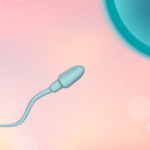Summary of this article
You have the right to take prenatal leave from 6 weeks (42 days) before the expected date of delivery. Postnatal leave can be taken up to 8 weeks (56 days) from the day after delivery. Prenatal leave is application-based, but postnatal leave must be taken for at least 6 weeks regardless of whether an application is submitted.
Physical changes and work styles during pregnancy
During pregnancy, various changes occur in the mother’s body as the baby grows. Here, we will explain the physical changes and work styles for the three periods of early pregnancy, mid-pregnancy, and late pregnancy.
Early pregnancy
Early pregnancy is the period up to 13 weeks and 6 days of gestational age.
The first day of the last menstrual period before becoming pregnant is considered 0 weeks and 0 days of pregnancy. Ovulation occurs approximately two weeks after the last menstrual period, and if fertilization occurs at the right time, the embryo implants in the uterus in about a week, establishing pregnancy. During the 3rd to 4th week after pregnancy is established, some people experience a small amount of bleeding called implantation bleeding, and some feel fatigue or lethargy due to hormonal changes. However, many people have almost no symptoms and may not realize they are pregnant during this period.
In the second month of pregnancy, from 4 to 7 weeks of gestational age, missed periods, breast tenderness, and fatigue become noticeable. More people become aware of their pregnancy due to these subtle physical changes. From this period onwards, though it varies individually, morning sickness, dizziness, anemia, and abdominal bloating may increase, making standing work difficult. It is advisable to inform your workplace about the pregnancy and consult about the workload and work style if you are struggling.
The third month of pregnancy, from 8 to 11 weeks of gestational age, is the peak period for morning sickness. Severe morning sickness can make it difficult to eat and sleep, making it hard for some people to work. It is important to avoid overexertion and to adjust according to your physical condition for the well-being of both the mother and the baby.
The fourth month of pregnancy, from 12 to 15 weeks of gestational age, is when morning sickness begins to subside. At the same time, the belly starts to become more prominent, and physical changes are more noticeable. However, as the physical condition is still not stable, it is crucial to avoid overexertion.
Mid pregnancy
Mid pregnancy is the period from 14 weeks and 0 days to 27 weeks and 6 days of gestational age.
The fifth month of pregnancy, from 16 to 19 weeks of gestational age, is called the “stable period,” where the risk of early miscarriage decreases and morning sickness subsides for many people. The uterus also enlarges, making the belly more noticeable. This period is marked by rapid growth of the baby, making anemia more likely. If you feel dizziness, lightheadedness, or unsteadiness, it is necessary to squat down, reduce standing work, and consider working from home more frequently.
In the sixth month of pregnancy, from 20 to 23 weeks of gestational age, as the baby grows larger, the belly protrudes more, altering posture and balance. This period also sees increased minor issues such as varicose veins, swelling in the legs, and leg cramps due to increased pressure on the veins. Standing work may become more challenging, and fatigue and abdominal tightness may persist. Adjusting the workload according to your physical condition is crucial.
The seventh month of pregnancy, from 23 to 27 weeks of gestational age, is when the baby’s movements become more active. The growing baby puts pressure on the internal organs, which can reduce the amount of food you can eat, cause constipation, and lead to hemorrhoids for some people. Because the internal organs are compressed, lying down can make breathing difficult, and active fetal movements can make it hard to sleep or rest, so it is essential to rest as needed without overexertion.
In the case of twins or more, the Labor Standards Act stipulates that maternity leave can be taken from 14 weeks onwards, with 26 weeks being the guideline for starting maternity leave.
Late pregnancy
Late pregnancy refers to the period from 28 weeks of gestational age onwards.
In the eighth month of pregnancy, from 28 to 31 weeks of gestational age, the baby’s weight is around 1 kg, and the baby is developing bodily functions that could allow survival if born prematurely. Braxton Hicks contractions, known as false labor, become more noticeable, and rapid belly growth can make stretch marks more prominent. Swelling can also become more severe, so it is crucial not to overexert yourself.
The ninth month of pregnancy, from 32 to 35 weeks of gestational age, is when some women start taking maternity leave. According to the Labor Standards Act, maternity leave begins six weeks before the expected delivery date. If the pregnancy is progressing smoothly, 33 weeks (the second week of the ninth month) is the general guideline for when to stop working. Some people may choose to take paid leave to start their maternity leave early, while others prefer to work as close to the delivery date as possible. The best approach is to adopt a working style that places the least strain on both the mother and the baby.
During this period, reduced activity and lack of exercise due to maternity leave can be common. Since physical strength is essential for childbirth, it is important to engage in simple exercises to maintain fitness.
In the tenth month of pregnancy, from 36 to 40 weeks of gestational age, births up to 36 weeks are considered preterm, while births between 37 to 41 weeks are considered full-term. This period is marked by the possibility of the baby being born at any time. Some people may feel increased abdominal tightness or notice that the baby has moved down into the pelvis in preparation for birth. There are still many things to do, such as preparing for hospital admission and gathering baby supplies, so it is important to take breaks and avoid overexertion while getting ready for the baby.
The expected delivery date is just that—an estimate. It is important to cherish the timing of the baby’s arrival and to remain calm even if the baby is born before or after the expected date.
Reporting the pregnancy
When is the best time to announce a pregnancy? When should you tell your family? When should you inform your workplace? Here are some recommended timings.
Reporting to family
There are several timings for announcing the pregnancy to family members. It is common to inform your partner around the second month of pregnancy when you notice a missed period. This is also the time when you might use a simple pregnancy test or visit an obstetrician for a confirmed diagnosis. You can inform your family about the possibility of pregnancy at this stage.
Additionally, some people choose to inform their family after using a pregnancy test or when the baby’s heartbeat can be confirmed at the obstetrician’s office.
You can tell close family members at the same time or wait until the pregnancy reaches the stable period. It is best to share the news at a time that is not burdensome for both the mother and the partner.
Reporting to the workplace
Reporting your pregnancy to your workplace cannot wait until the stable period. The reason is that minor issues such as morning sickness and early miscarriage may occur before reaching the stable period, potentially affecting your work. To prevent these minor issues and to adjust your workload or job responsibilities as necessary, it is important to inform your supervisor or HR department at the very least as soon as the pregnancy is confirmed.
Additionally, discussing maternity leave, returning to work, or resignation in advance can ensure a smooth transition and handover process.
As for informing colleagues, this can be done when you need accommodations or after entering the stable period. It is best to communicate this news in a manner that considers your work relationships and is manageable for you.

Consulting on workload and work style
Adjusting workload, job responsibilities, working hours, commuting time, and break times to accommodate the physical changes associated with pregnancy is a right that pregnant women are entitled to. When a doctor advises that special consideration is necessary due to prenatal checkups or other medical reasons, employers are required to make these accommodations under the Labor Standards Act and the Equal Employment Opportunity Act.
Experiencing various physical changes during pregnancy and being unable to work as you did before is not a sign of weakness. Overexerting yourself and not getting enough rest can cause stress to the baby and increase the risk of threatened preterm labor or miscarriage. It’s important to consult with your supervisor, HR department, or occupational physician to ensure that both the mother and the baby have a work environment with minimal stress.
When does maternity leave start?
Maternity leave, abbreviated as “産休 (sankyū),” refers to “prenatal and postnatal leave” and is a right that pregnant workers have, regardless of their employment status, whether they are full-time employees, temporary workers, or part-time workers.
Maternity leave is divided into “prenatal” and “postnatal” periods, with different leave durations for each, as specified in Article 65 of the Labor Standards Act as follows:
- “Employers must not allow a woman who is scheduled to give birth within six weeks (or 14 weeks in the case of a multiple pregnancy) to work if she requests leave.”
- “Employers must not allow a woman to work within eight weeks after giving birth. However, if the woman requests to work after six weeks postpartum and the doctor deems it safe, she may be allowed to work in activities that the doctor has approved.”
Prenatal leave can be taken from six weeks (42 days) before the expected delivery date. Postnatal leave can be taken up to eight weeks (56 days) from the day after delivery. Prenatal leave is application-based, but postnatal leave must be taken for at least six weeks regardless of whether an application is submitted.
Taking childcare leave and returning to work
Parental leave, abbreviated as “育休 (ikukyū),” refers to “childcare leave” and is stipulated in Articles 5 to 9 of the Child Care and Family Care Leave Act as follows:
“Workers can take childcare leave until their child reaches one year of age upon request (certain fixed-term contract workers are also eligible). In certain circumstances, such as difficulty finding a nursery or other childcare issues, childcare leave can be extended until the child reaches 1.5 years or 2 years of age.”
Parental leave is generally available for one year from the day the baby is born until the day before the child’s first birthday. However, if it is difficult to find a childcare facility or if there are other difficulties in raising the child, parental leave can be extended up to a maximum of two years.
Even after returning to work, you can receive various considerations such as childcare time and child nursing leave. For more details, please refer to this website.
Creating a Women-Friendly Workplace – Childcare for Working Moms
In case of resignation
You may consider switching to part-time or temporary work or resigning due to pregnancy and childbirth. If you decide to resign, inform your employer early, considering your career and lifestyle. If you can’t decide before childbirth, discuss thoroughly with your supervisor and consider taking maternity and parental leave, then reassessing your work style upon returning to work. Resigning before childbirth can result in not receiving childcare leave benefits and a reduction in maternity allowance, significantly impacting your finances. Carefully consider your life plan and financial plan before deciding to resign.

Laws and regulations protecting pregnant women
The laws protecting working pregnant women are the “Labor Standards Act” and the “Equal Employment Opportunity Act.” The Labor Standards Act includes maternity leave, known as “sankyu,” as well as restrictions on hazardous work for pregnant women, job transfer to lighter duties, limits on overtime, holiday work, night work, restrictions on applying flexible working hours, and childcare time, all established as maternity protection provisions.
Under the maternity health management measures of the Equal Employment Opportunity Act, provisions include ensuring time for health guidance or medical checkups, easing commuting, providing breaks, and addressing symptoms during pregnancy and after childbirth.
For example, if commuting on public transportation or being in crowded places is burdensome, driving a private car is allowed. In cases of severe morning sickness, appropriate accommodations include changing job duties, extending break times, or increasing the number of breaks to match the symptoms.
Things to be careful about when working
The most important thing to prioritize while working is “the health of the mother and baby.” Many mothers may feel pressured not to inconvenience others or increase their colleagues’ workload, leading them to overexert themselves. However, it is not easy to continue working the same way as before pregnancy while protecting the baby’s life. This can burden both the mother and baby, and there are cases where it may lead to serious complications like threatened preterm labor or miscarriage.
Various considerations during pregnancy are stipulated by law and are a worker’s right. When you find out you are pregnant or notice changes in your physical condition, do not worry alone—consult with your workplace. If workplace consultation does not resolve the issue, you can also seek help from public institutions. It is important not to bear the burden alone and to work within your limits.
If you want to consult about working during pregnancy, please refer to this website.
Creating a Women-Friendly Workplace – Contact Information for Troubles
Conclusion
Did you resolve your questions about working during pregnancy and how long you can work? Minor issues caused by morning sickness and hormonal changes vary greatly from person to person, so it cannot be generalized as “you can work until X weeks.” Additionally, not only the nature of the work and the work environment but also various factors such as work-related stress and commuting can affect both the mother and the baby. Various laws have been established to protect mothers and babies, and it is a worker’s right to seek considerations in accordance with these laws. At Hiro Clinic NIPT, as soon as pregnancy is confirmed by an ultrasound, you can immediately check the risk of chromosomal abnormalities in the baby. For questions about NIPT (Non-Invasive Prenatal Testing), please feel free to consult Hiro Clinic NIPT.
【References】
- Japan HR and Labor Consultant Group – Legally Established Systems for Pregnancy, Childbirth, Childcare, and Nursing Care
- Creating a Women-Friendly Workplace – Laws and Systems to Know During Pregnancy and Childbirth
- Creating a Women-Friendly Workplace – Response to Female Workers During Pregnancy
Article Editorial Supervisor

Dr Hiroshi Oka
NIPT specialist clinic, MD
Graduated from Keio University, School of Medicine
 中文
中文






















